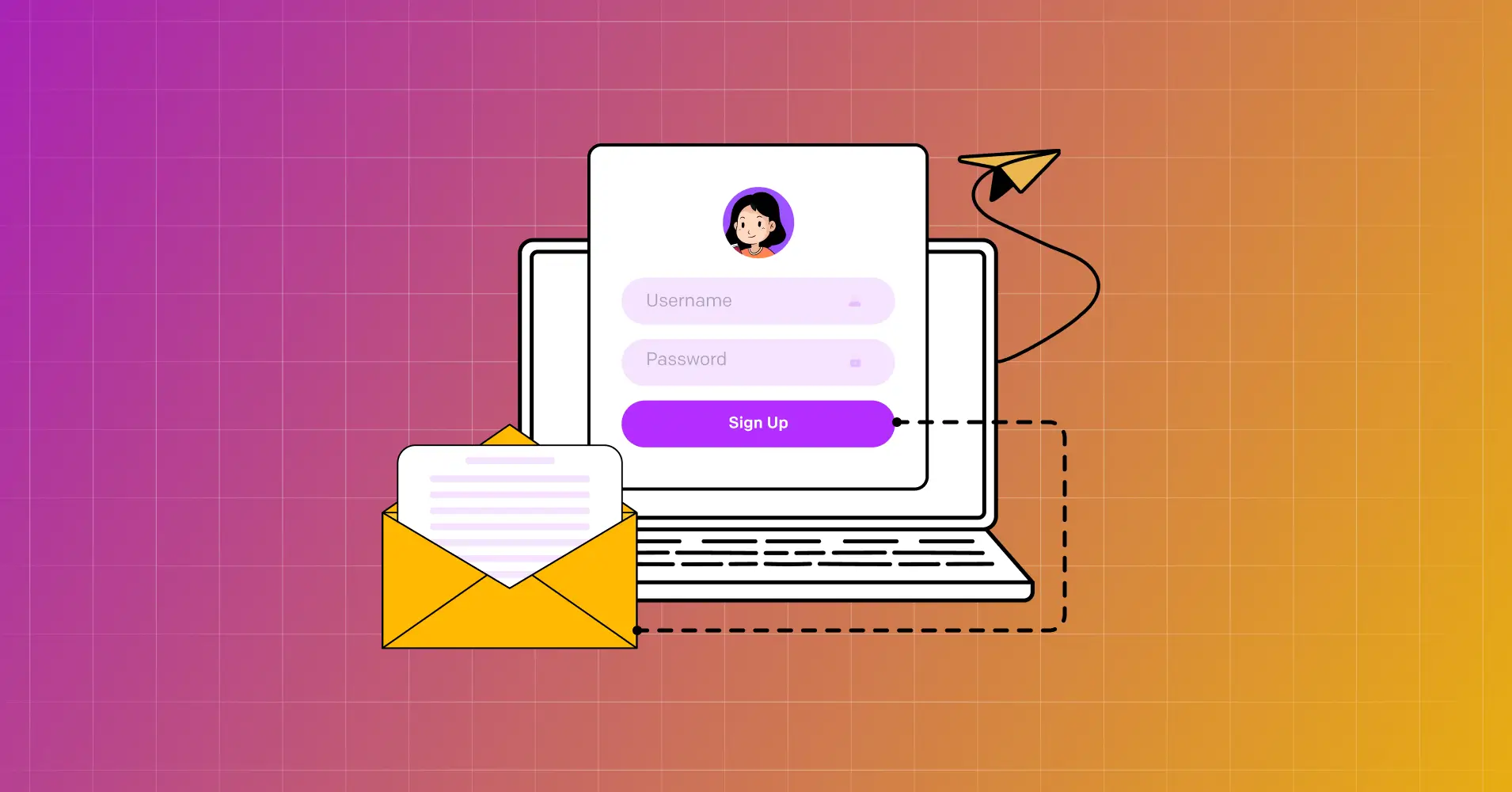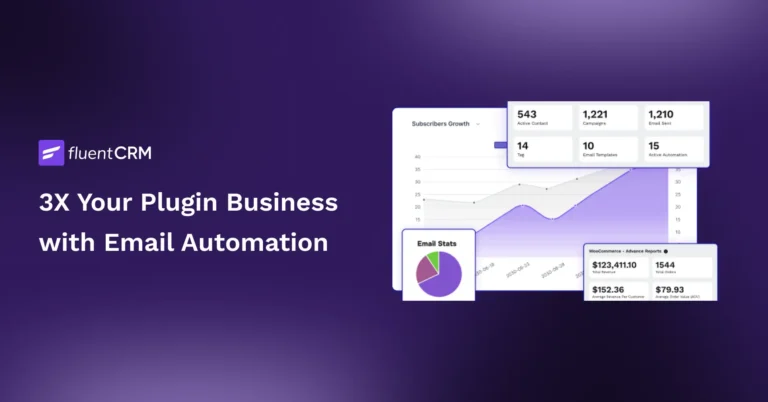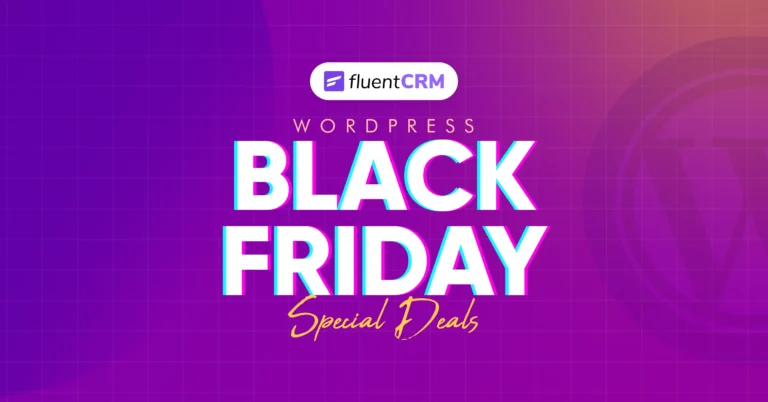
How to Write Effective Lead Nurturing Email Sequences That Convert?
Did you know?
Companies that nurture leads make 45% more sales than non-nurtured leads!
–MarketingSherpa
Creating an engaging lead nurturing email sequence isn’t just about writing emails; it’s about crafting a journey that feels personal and valuable to your readers.
Once your contact settles down in your email list, you want to send them exactly what they need and suggest their next steps. By reaching out to your audience with a friendly tone at that stage of their journey, you’ll be able to kick off your relationship in a positive manner— eventually turning them into loyal customers.
This is what a well-planned email sequence can do— it builds a connection, one email at a time!
So, how do you get there? Let’s break it down together, step by step.
What is Lead Nurturing?
Lead nurturing is the process of building and maintaining relationships with potential customers through targeted, relevant communication. It includes:
- Sending useful information tailored to their needs
- Checking where they are in the buying process
- Staying in touch and addressing their concerns
- Building trust and long-term connection
- Guiding them towards making a purchase
The goal is to turn interested leads into loyal customers by providing consistent and valuable support.
Types of Lead Nurturing Email
“Trust is built with consistency”
– Lincoln Chafee
To help you connect and build trust at every stage, you need to know the different types of lead-nurturing email sequences: Lead nurturing emails can be divided into the below categories:
- Welcome Email Sequence: Introduces your brand and sets the tone for future communications.
- Confirmation Email Sequence: Verifies a subscriber’s email address while establishing trust.
- Onboarding Email Sequence: Guides new customers on how to maximize your product or service.
- Cart Abandonment Email Sequence: Reminds customers about items left in their shopping cart.
- Repeat Customer Email Sequence: Encourages previous buyers to make another purchase.
- Re-engagement Email Sequence: Reconnects with inactive subscribers to reignite their interest.
- Event Email Sequence: Notifies subscribers about upcoming events and encourages attendance.
Now that you’re familiar with the different types of connections you can build, let’s move forward and dive into crafting an effective lead-nurturing email sequence.
Quick Read: To know email marketing sequences for specific types of businesses, you can give this blog a quick read!
How to Write a Lead Nurturing Email Sequence?
“In the end, we will remember not the words of our enemies, but the silence of our friends.”
– Martin Luther King Jr.
In short: if you want to build a genuine connection with your audience, you need to start using your voice. But to make the most of lead nurturing email sequence, your email needs to include certain key elements. right?
That’s what we explore here. Let’s begin!
Define Your Goals and Audience
Your lead nurturing journey starts long before you hit send. It begins with a deep dive into who your audience truly is and what drives them.
This means knowing who they are, what they care about, and how they are segmented within your database. Ask yourself these key questions:
- What challenges are they facing?
- What goals are they striving for?
- What are their pain points?
- How can your product or service make a positive impact on their lives?
By answering these questions, you’ll have a clear picture of what content will resonate with your audience. This insight will guide the tone, message, and structure of your emails.
Once you have this clarity, it’s essential to segment your email list to ensure your messages reach the right people at the right time.
Pick the Right Email Type
“All animals are equal, but some animals are more equal than others”
– George Orwell, Animal Farm
Just like Orwell said in his political satire, not every lead is the same, and neither are the emails you send them.
To truly nurture your leads and guide them down the funnel, you need to be strategic about the types of emails you deliver. It’s all about sending the right message at the right time.
Here’s how to identify which type of lead nurturing emails you need to send:
- Analyze how leads are interacting with your brand
- Consider their stage in the funnel
- Leverage the segmentation data you’ve already gathered
- Identify their pain points and align with the plan accordingly
Identifying which type of lead nurturing email to send is a must to keep your prospects engaged and move toward conversion.
Trace the Customer’s Path

Map out the customer journey by determining which stage your audience is currently in. We’ve divided the sales funnel into three stages.
So, start by asking yourself: Which stage are my leads in? Is it their first interaction and they’re just getting familiar with you or your brand? Do they know well about you and need some guidance?
Once you’ve identified their position in the funnel, you can strategically design your email sequence to guide them forward. Tailor your content to address their specific needs at each stage, and ensure that every email you send is relevant, timely, insightful, and effective to move them closer to conversion.
Give More, Get More
Nobody wants to be used. Remember that ‘friend’ who only shows up when he needs something?
Yes, to avoid that, stick to the 80/20 rule. How?
Focus on giving value 80% of the time, offering helpful insights and useful information without expecting anything in return. Use the remaining 20% to make your sales pitch or highlight your products and services.
The main goal is to be a resource and genuinely assist your audience, so they see you as a helpful partner rather than a pushy seller.
Choose Subject Lines that Hook and Wow
Among 371.6 billion emails that land in inboxes each day, why would someone open your email if that doesn’t have a good subject line?
So, creating a good subject line is a must. To create compelling subject lines, start by understanding your audience’s challenges and goals. Ask yourself:
- What keeps them up at night?
- How can your email help solve their problems?
Use this insight to craft subject lines that speak directly to their needs.
Next, align your subject lines with the lead’s stage in the sales funnel. Whether they’re exploring options or ready to make a decision, your subject lines should be relevant and enticing.
Make every subject line count by making it meaningful and appealing to your audience’s current journey.
Let Statistics and Referral Speak for You
96% of adults rely on their research to make their decision
– Pew Research Center
Now, research means they will dive into statistics, and look for social proof before even considering buying from you. Use this to your advantage by showcasing compelling statistics and glowing referrals in your emails. You can:
- Highlight key figures that demonstrate your product’s effectiveness
- Include testimonials from satisfied customers to build credibility
When your leads see that others have had positive experiences, they’re more likely to trust and engage with your brand. Let these elements do the heavy lifting, by proving your value through evidence and authentic recommendations.
Your audience will appreciate the transparency and be more inclined to take the next step with you.
Design and Time Your Emails
A great email isn’t just about what you say— it’s also about how it looks and when it lands in your inbox. Craft visually appealing emails with:
- Clean and concise message
- Engaging designs
- Reflection of your brand
Timing is just as crucial. Analyze your audience’s behavior to find the best times to send your emails. Knowing the right timing and email frequency boosts engagement, leading to higher open and click-through rates.
Combine the stellar design with strategic timing to ensure your emails not only get noticed but also drive more traffic!
Test, Tweak, Triumph
Email marketing is like cooking—everyone knows the recipe, but the real magic happens when you tweak the ingredients to perfection.
You can start by setting clear goals with Key Performance Indicators (KPIs) like open rates and conversions, so you know where you stand.
Then, get creative with A/B testing. Try out different subject lines, layouts, timings, and segmentation to see what clicks with your audience. But don’t stop there—refinement is key. Analyze your results, make adjustments, and keep experimenting.
Automate Your Email Sequence for Lead Nurturing
Handling all this alone can be tough. That’s where FluentCRM steps in. FluentCRM’s automated email sequences cover everything that we discussed here. With its automated email sequences, you can set up once and let the system handle the rest.
No need to constantly create new funnels— FluentCRM takes care of onboarding, re-engaging, and converting leads with precision so you can focus on growing your business, while FluentCRM does the heavy lifting for you.

Embrace the efficiency of FluentCRM and streamline your lead nurturing journey today!
Craft and Capture with Lead Nurturing Email Sequence
Are you ready to see results?
With this guide, you will craft lead-nurturing email sequences that capture attention and drive action.
You need to be:
- Personal
- Timely
- strategic
By consistently engaging and guiding your leads, you’ll not only capture their interest but also convert them into loyal customers.
And always use insights from your data to refine and perfect your approach.
Start building your effective email sequences today and watch your connections and conversions grow!
Samira Farzana
Once set out on literary voyages, I now explore the complexities of content creation. What remains constant? A fascination with unraveling the “why” and “how,” and a knack for finding joy in quiet exploration, with a book as my guide- But when it’s not a book, it’s films and anime.






Leave a Reply